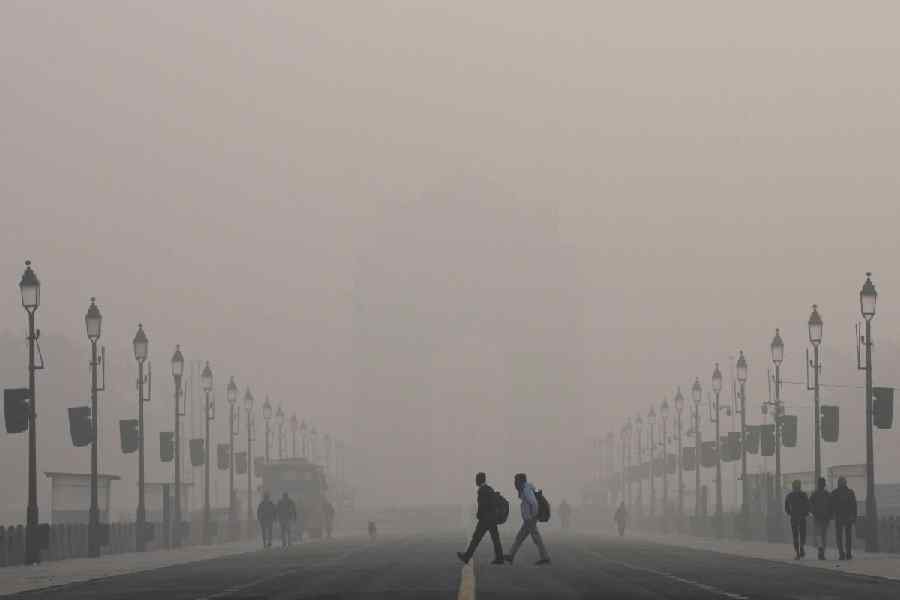
The double tragedy didn't hit the headlines, but Sukhwinder remembers it well. A few months ago, a Chandigarh woman died of breast cancer. Her distraught husband shot himself dead. Their son, too, tried to commit suicide, the health worker recalls.
Such stories are commonplace in the Union Territory (UT). Sitting in his house in Sector 38, Kuldip Singh mourns the death of his wife, Baljinder. "We could not do anything to save her life," Singh says.
She too died of breast cancer, as her mother had before her.
When you think of Chandigarh, you think of a well-designed city, resting on the foothills of the Himalayas. But Le Corbusier's baby is now increasingly being associated with death.
The incidence of breast cancer is higher in Chandigarh than anywhere else in the country, says a recent report - "Cancer burden in Chandigarh and Punjab". The report, prepared by the Postgraduate Institute of Medical Education and Research (PGIMER), Chandigarh, in collaboration with the Tata Memorial Centre, Mumbai, the department of health and family welfare, Government of Punjab, and director, health services, Chandigarh, states that the incidence rate of breast cancer in Chandigarh is 37.5 per 1 lakh population.
In comparison, it is 26.1 per 1 lakh population in Calcutta. In neighbouring Mohali, too, the breast cancer incidence rate is higher than that in Calcutta and Mumbai. According to government figures, one out of every two breast cancer patients in India succumbs to the disease.
According to PGIMER's hospital-based cancer registry, breast cancer accounts for approximately 20 per cent of all cancers in women. "In our consolidated report spanning registration between 2011 and 2013, we registered 1,630 women with breast cancer. They came from Chandigarh and the neighbouring states of Punjab, Haryana, Himachal Pradesh, Uttar Pradesh and Uttarakhand," says Dr S. Ghoshal, professor and head, radiotherapy, regional cancer centre, PGIMER.
Even girls in their late teens are falling prey to the disease. "We have seen women between the ages of 19 and 90 with breast cancer, though 80 per cent of the patients belong to the age group of 35-64. The peak age group is between 50 and 54 years," Dr Ghoshal says.
Doctors are concerned over the rise of cancers in general, and breast cancer in particular, in Chandigarh and adjoining areas which fall under Punjab.
Health experts cite a number of reasons - including fat-rich diets - why women in the UT are falling prey to the killer disease. It could be related to lifestyle, stress or obesity, they say. "In Chandigarh, most women are overweight and a large percentage is obese. Physical inactivity is also very common here," says J.S. Thakur, professor of community medicine, School of Public Health, PGIMER.
Pollution is also being seen as a contributing factor. "Though the level of pollution in Chandigarh is not comparable with that of Delhi, it is high since we have the highest vehicles per capita in the country," Thakur points out.
But these factors certainly are not unique to Chandigarh, he admits. "Women in other parts of the country too suffer from stress or are obese, but we do not have any such data to draw a comparison with them," he says.
Some doctors stress that the high rate of cancer is also because of genetic reasons. Research shows that 5-10 per cent of breast cancers are related to inherited faulty genes. Smoking and drinking increase the risk of breast cancer. Dietary habits too play a role. "People are increasingly moving from a traditional diet to fast food," Thakur points out.
What compounds the problem, doctors say, is that women neglect their health and do not go for timely check-ups. "Breast cancer detected in early phases is curable in 60-65 per cent of cases," Thakur notes. "But at least 60-70 per cent of the cases are detected at a late stage. So you can't do much."
Awareness of the disease is still low in Chandigarh, despite its demographic composition. "Chandigarh is primarily a city of the service class who are educated and mostly hold government jobs but they are not serious about the disease," rues Kamaljit Walia of the Chandigarh Breast Cancer Trust that provides financial help to breast cancer patients besides promoting breast cancer awareness programmes and organising surgery for those with cancer. Walia started the trust in 2005 after her youngest sister was diagnosed with breast cancer. Timely medical intervention saved her life.
Concerned over the high incidence of breast cancer, PGIMER and the government have initiated cancer-screening programmes. "We have held meetings with the director of health services in this regard. For breast cancer, we have advocated that clinical test examinations be done in all hospitals in Chandigarh and diagnostic facilities be strengthened," Thakur says.
But breast cancer is not the only cause of worry. Cervix uteri is the second leading cancer site after breast in Chandigarh, Mohali and Sangrur.
Doctors say cervical cancer can be prevented with the help of primary measures such as good genital hygiene and secondary measures such as inspection. The Punjab government has started a pilot project scheme for breast and cervical cancer patients and is carrying out cancer awareness drives, says Vini Mahajan, principal secretary, health and family welfare, Punjab.
But cancer in men is also higher than the national average in the region. As against the national cancer incidence rate of 97.4 per 1 lakh in females and 92.4 per 1 lakh in males, 105 women and 93.4 men in every 1 lakh population suffer from cancer in the UT.
Among men, lung, prostate and oesophagus cancer are the most common. While lung and prostate cancer are the most common cancers in males in Chandigarh and Mohali, oesophagus is the predominant form of cancer in males in Mansa district, the report says. However, it says the incidence of prostate cancer in Chandigarh is lower than that in New Delhi though it is slightly higher than that in Mumbai and Chennai.
Singh points out that men reducing alcohol consumption and applying tobacco control measures can prevent cancer in men.
Though the UT and Punjab government have announced schemes to fund cancer treatment, not everybody is happy with the measures.
"The government is currently preoccupied with carrying out certain exercises which are visible to the people such as adding more cancer beds and providing more treatment facilities. But these measures will not help in arresting the incidence of cancer," argues Dr. (Lt Col) G.P.I. Singh of the Adesh Institute of Medical Sciences & Research, Bathinda.
He stresses the need for preventive action. "The causes of cancer need to be identified and then those need to be eliminated by government policies," he says.











